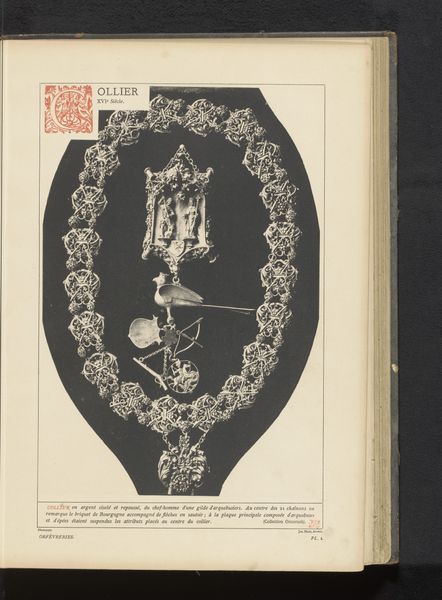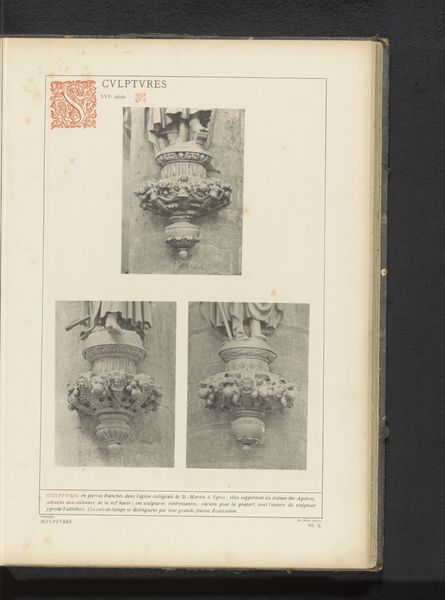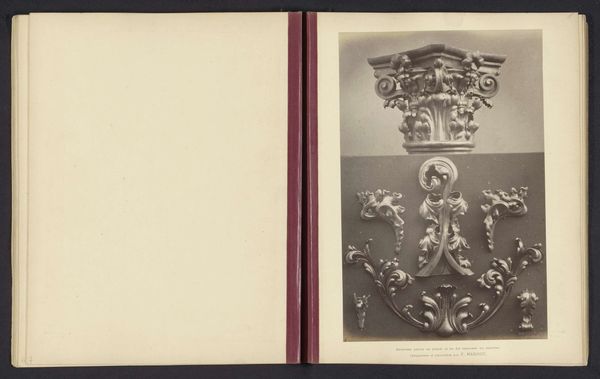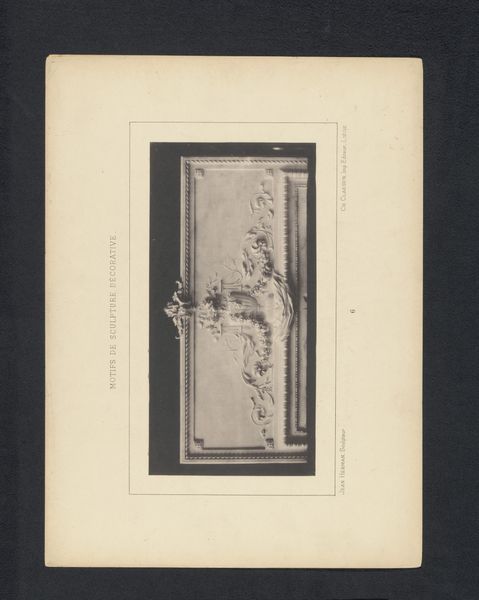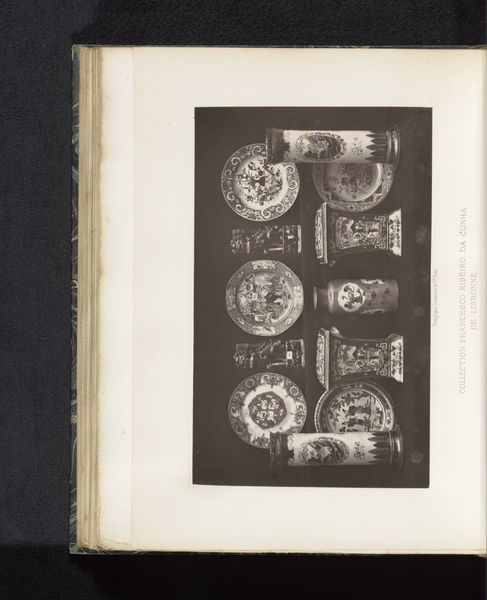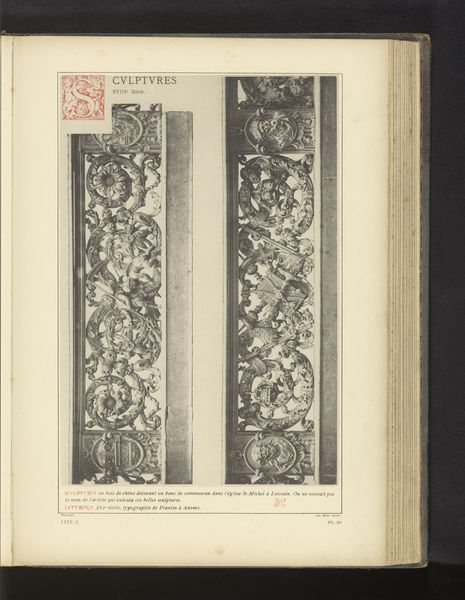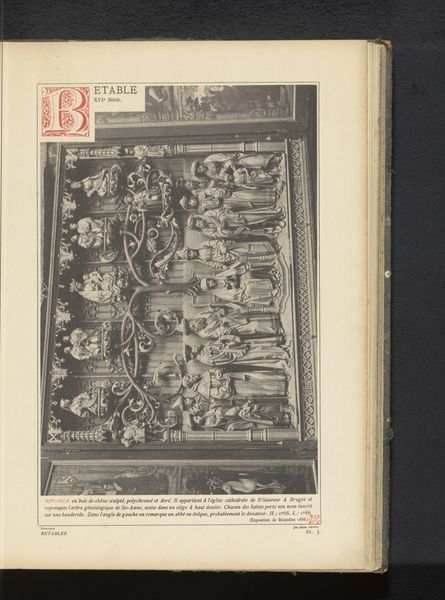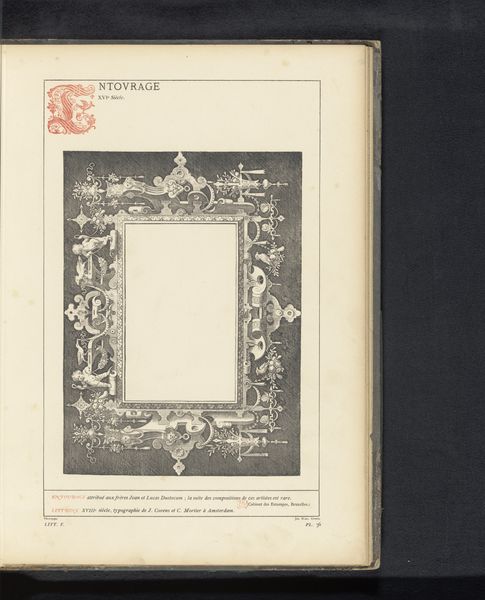
print, photography
# print
#
photography
#
ancient-mediterranean
#
history-painting
#
realism
Dimensions: height 340 mm, width 229 mm
Copyright: Rijks Museum: Open Domain
Curator: Let's take a look at this interesting photograph titled "Drie opnames van gedenkplaten in de kapellekerk te Brussel," or "Three views of memorial plaques in the chapel church in Brussels". It's an anonymous work, dating from before 1880. What are your initial impressions? Editor: Stark. Those ornate, somewhat eroded memorial plaques jump out from what must have been quite a monumental church interior. The heavy use of shadow creates a real sense of the passage of time, even decay, clinging to the stonework. It’s a powerful statement. Curator: Absolutely. Focusing on these plaques offers a glimpse into how historical memory was curated and presented in a religious space. The baroque styling of these memorial markers contrast against their presentation within what appears to be an organized photograph within a catalogue. These were created to memorialize important historical figures. The very act of enshrining them in a church… Editor: ...Speaks to the socio-political influence of religion and art. Brussels was then developing as a modern capital; how did historical imagery bolster national identity? Was it also about control? Displaying these markers publicly certainly cemented these powerful figures. Curator: A crucial point! We can see the lingering influence of the Church, certainly, and this desire to root oneself in history is a common symbolic impulse that touches many areas of culture. The act of taking photos of this art also indicates its relevance during that era and suggests the need for people to visually possess images of the plaques and their location. Editor: I find it fascinating that this is not a study of an Old Master painting or sculpture, but the more quotidian features, the public art in an established social setting. What was its purpose for viewers flipping through the album? Was it simply documentary, a preservation effort? Or something more calculated? Curator: Most likely, it functioned as part of a larger preservation project, serving both to archive and circulate the imagery. The inclusion of such everyday aspects suggests the goal was an encompassing portrait of cultural memory and space. The very lack of ostentation, a direct focus on the memorial marker, renders them iconic, don’t you think? Editor: I see your point, these somewhat modest works become more striking as we grasp how much context and meaning they conveyed to those in and outside the church. Curator: Well, on that note, thank you for illuminating aspects I might otherwise have overlooked! Editor: Likewise! A potent reminder that history is built into everything we choose to show – and how we choose to show it.
Comments
No comments
Be the first to comment and join the conversation on the ultimate creative platform.
